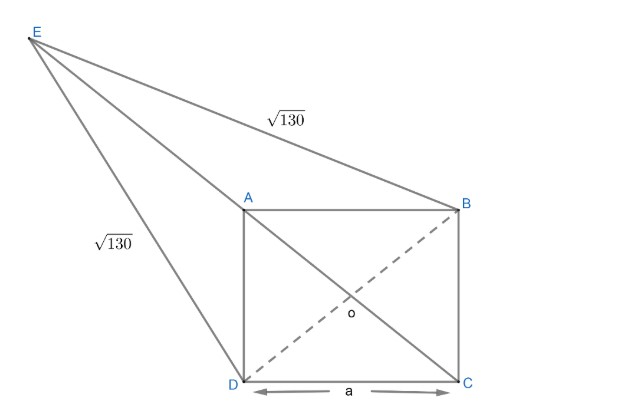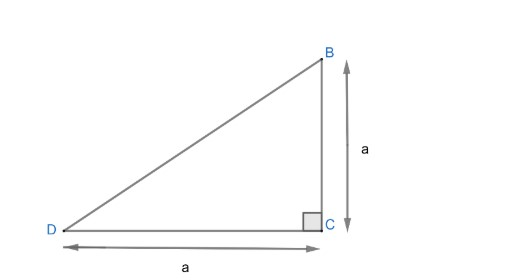Question
Question: Let ABCD be a square and E be a point outside ABCD such that E,A,C are collinear in that order. Supp...
Let ABCD be a square and E be a point outside ABCD such that E,A,C are collinear in that order. Suppose EB=ED=130 and the areas of triangle EAB and square ABCD are equal. Then the area of square ABCD is?
A. 8
B. 10
C. 120
D. 125
Solution
Hint:Find area of triangle EAB in terms of side of square. Use property of square and congruent triangle i.e. congruent triangle have the same area.
Complete step-by-step answer:
Let us draw a diagram by using the given information which are
∗ABCD is a square and suppose side=a
∗E is outside and E,A,C are collinear i.e. E,A,C lying on a line
∗EB=ED=130
∗Area of triangle EAB=Area of square ABCD

Figure 1
On joining BD, we get a triangle DEB with two sides equal, hence it will be an isosceles triangle.

Figure 2
As E,A,C are collinear, means AC will be one of diagonals of square and BD is another. As we know the property of square that diagonals are perpendicular to each other and bisect each other as well.
As AO is a part of diagonal AC which is perpendicular to BD, it means AO is perpendicular to BD.
Now, coming to figure (2), AO or EO is perpendicular to each other. So, area of any triangle can be written as;
Area of triangle=21×base×height
In triangle BED, we have base =BD and Height=OE
Hence, Area of ΔBED=21×BD×EO.........(1)
We can get length BD by using Pythagoras in ΔBCD from figure (1)

Figure 3
We have,
